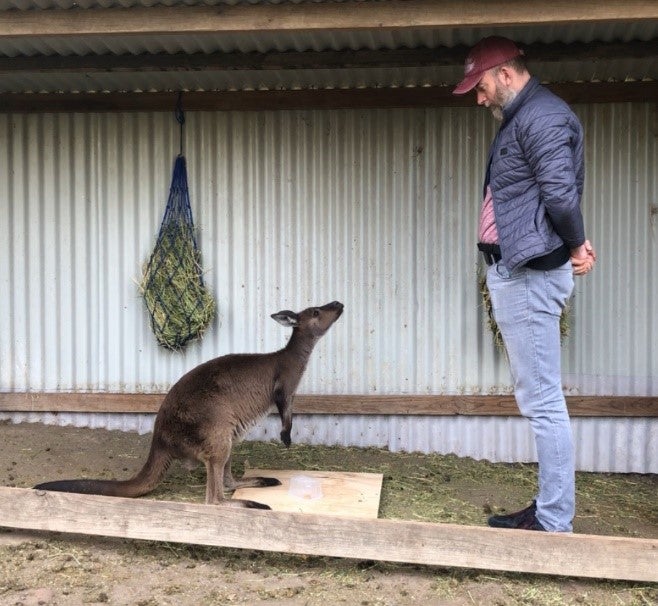Kangaroos can communicate with humans and even ‘ask for help’ when needed, study finds
Kangaroos can intentionally communicate with humans in a way similar to other domesticated animals such as dogs, horses and goats

Your support helps us to tell the story
From reproductive rights to climate change to Big Tech, The Independent is on the ground when the story is developing. Whether it's investigating the financials of Elon Musk's pro-Trump PAC or producing our latest documentary, 'The A Word', which shines a light on the American women fighting for reproductive rights, we know how important it is to parse out the facts from the messaging.
At such a critical moment in US history, we need reporters on the ground. Your donation allows us to keep sending journalists to speak to both sides of the story.
The Independent is trusted by Americans across the entire political spectrum. And unlike many other quality news outlets, we choose not to lock Americans out of our reporting and analysis with paywalls. We believe quality journalism should be available to everyone, paid for by those who can afford it.
Your support makes all the difference.Kangaroos can use body language to communicate with humans in a similar way to domesticated animals such as dogs, horses and goats, a new study has found.
Researchers at the University of Sydney and the University of Roehampton studied kangaroos at three locations across Australia and found that the animals were capable of “asking for help”, gazing intently at a human when trying to access food placed in a closed box instead of attempting to open the box themselves, a behaviour usually associated with domesticated animals.
In species without hands for pointing, gazing at humans when dealing with inaccessible food during an unsolvable task, and in particular, alternating the gaze between the humans and the task, are often interpreted as attempts at “referential intentional communication”, the report said.
Dr Alexandra Green, a co-author of the study, said rather than just give up when they couldn’t open the box, the vast majority of the kangaroos looked to the researcher and then back to the box, a gesture interpreted as a request for help.
“Their gaze was pretty intense,” said Dr Green, who is also a post-doctoral researcher in the Sydney School of Veterinary Science at the University of Sydney.
“We’ve previously thought only domesticated animals try to ask for help with a problem. But kangaroos do it too. If they can’t open the box, they look at the human and back to the container. Some of them used their nose to nudge the human and some approached the human and started scratching at him asking for assistance,” Dr Green said.
Dr Alan McElligott, who is also the lead author of the research, said their study found that communication between animals can be learnt and that the behaviour of gazing at humans to access food is not related to domestication.
“Indeed, kangaroos showed a very similar pattern of behaviour we have seen in dogs, horses and even goats when put to the same test,” said Dr McElligott who previously led a study that found goats can understand human cues.
“Our research shows that the potential for referential intentional communication towards humans by animals has been underestimated, which signals an exciting development in this area,” Dr McElligott added. “Kangaroos are the first marsupials to be studied in this manner and the positive results should lead to more cognitive research beyond the usual domestic species.”




Join our commenting forum
Join thought-provoking conversations, follow other Independent readers and see their replies
Comments